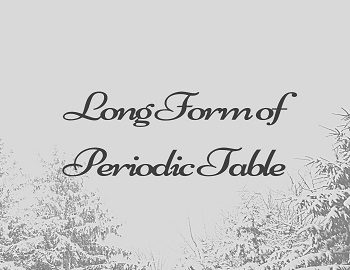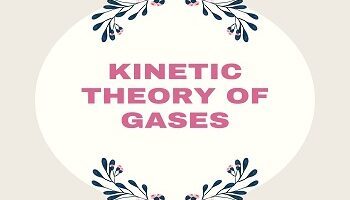Long Form of Periodic Table:
Since the time of Mendeleev, many forms of the periodic table have been suggested from time to time. The most simple and widely accepted of all these forms is the Extended or Long Form of periodic table. The main features of the long form of periodic table are mentioned below-
- Groups- There are 18 vertical columns in the periodic table which form 16 groups in all, one group (Group VIII) being divided into three families occupying three vertical columns. The groups are numbered I – A to VII – A, I – B to VII – B, VIII and zero group.
- Elements of groups I – A, II – A (on the extreme left) and III – A, IV – A, V – A, VI – A and VII – A (on the extreme right) have all shells complete except outermost one in their atoms. These elements are called normal, typical or representative elements.
- Elements of groups I – B to VII – B and VIII (given as III – B to VII – B, VIII, I – B and II – B in the periodic table) show a transition in character from the reactive metals on the left to the non-metals on the right. They are called transition elements. The atoms of these elements have two outermost shells incomplete.
- Elements of zero group are called noble or inert gases. The atoms of these elements have their inner and outer shells complete. The elements of zero group are placed towards the extreme right of the table.
- Periods- There are seven horizontal rows, called periods or series in the periodic table. The number of a period in the table represents the number of the outermost shell of the atom in which the electron is being gradually filled as the atomic number increases when we move from left to right along a period. The number of elements present in different periods is shown in the following table-
| Period | 1 | 2 | 3 | 4 | 5 | 6 | 7 |
| Number of Elements | 2 | 8 | 8 | 18 | 18 | 32 | Rest of the elements |
| 1H to 2He | 2Li to 10Ne | 11Na to 18Ar | 19K to 36Kr | 37Rb to 54Xe | 55Cs to 86Rn |
- The Lanthanides (58Ce to 71Lu considered in 6th period) and Actinides (considered in 7th period) are placed in separate rows at the bottom of the table because they form two clusters of elements possessing very similar properties.
Various properties of elements can be correlated with the position they occupy in the periodic table.









Comments (No)